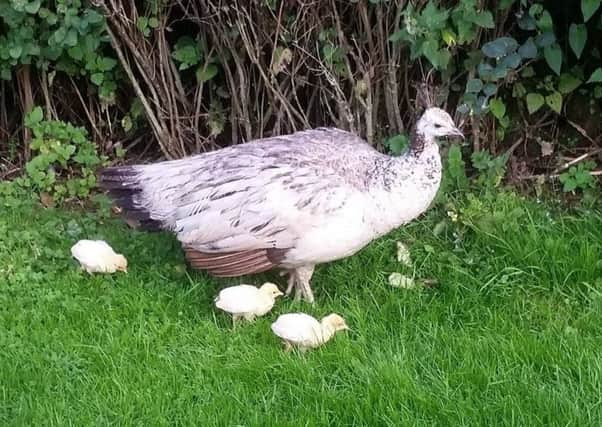View from the Zoo: Friendly birds are allowed to wander freely


The peafowl are very friendly which is why we are able to allow them to wander around the park and not keep them within an enclosure.
There are three species of peafowl in the wild today: the Indian, Congo and Green. Our peafowl are Indian, and are the national bird of India.
Advertisement
Hide AdAdvertisement
Hide AdThe male Indian peacock displays a bright blue head and chest, with an array of colours on his long tail feathers. These feathers can make up to two-thirds of the birds’ body length.
The purpose of the tail feathers is for the male to attract a female mate. The more impressive the feathers look, the higher the probability of him finding a mate.
However there is a trade-off as to how long and heavy the male should make his feathers as this can restrict his mobility and ability to escape from predators. Thus it really is an example of the survival of the fittest.
Females are not as brightly coloured as the males – they are grey-brownish in colour, and are much better at camouflaging themselves from predators, particularly when they are sitting on eggs in a nest.
Advertisement
Hide AdAdvertisement
Hide AdThe peacock tends to stick to a particular territory, with several females surrounding him.
After mating, the female will incubate fertilised eggs for 28-30 days, after which around four to six young will hatch out. The chicks will then follow mum, feeding from her bill before eventually learning what they are able to eat, usually insects and small grubs.
Peacocks are very vocal animals. They display a selection or various calls to each other, ranging from honks to meow-like calls.
As the peacock is the native bird of India, it is highly protected by Hindus in many areas. However it does still face a small amount of threat in the country for its meat and feathers, but its population numbers are fairly abundant.